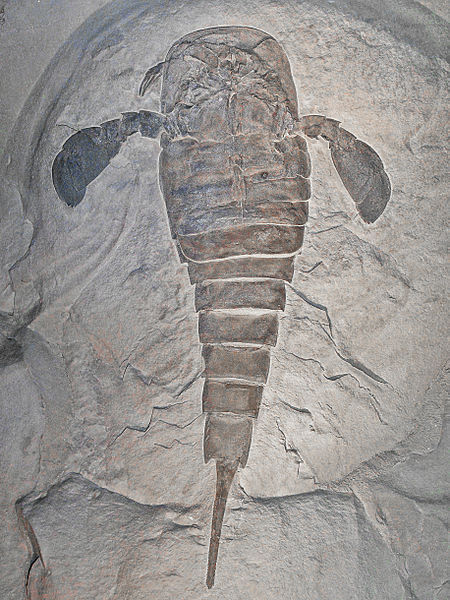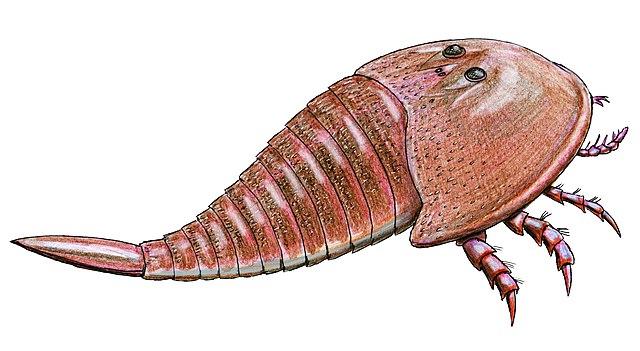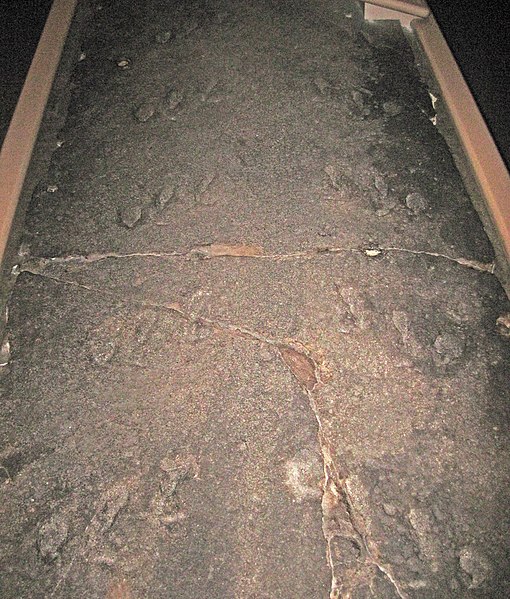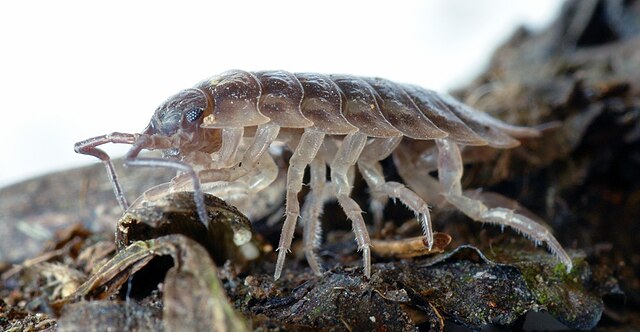Adelophthalmus is a genus of eurypterid, an extinct group of aquatic arthropods. Fossils of Adelophthalmus have been discovered in deposits ranging in age from the Early Devonian to the Early Permian, which makes it the longest lived of all known eurypterid genera, with a total temporal range of over 120 million years. Adelopththalmus was the final genus of the Eurypterina suborder of eurypterids and consisted the only known genus of swimming eurypterids from the Middle Devonian until its extinction during the Permian, after which the few surviving eurypterids were all walking forms of the suborder Stylonurina.
The type specimen of A. granosus, MB.A. 890, as illustrated in its original description by Hermann Jordan and Hermann von Meyer in 1854. The apparently eyeless carapace can be seen in the bottom-left illustration.
Fossil of A. imhofi, formerly considered to be the type species of the genus Lepidoderma, exhibited at the Senckenberg Museum of Frankfurt.
Fossil of A. mazonensis.
Line drawings depicting the top and bottom sides of a fossil of A. mazonensis.
Eurypterids, often informally called sea scorpions, are a group of extinct arthropods that form the order Eurypterida. The earliest known eurypterids date to the Darriwilian stage of the Ordovician period 467.3 million years ago. The group is likely to have appeared first either during the Early Ordovician or Late Cambrian period. With approximately 250 species, the Eurypterida is the most diverse Paleozoic chelicerate order. Following their appearance during the Ordovician, eurypterids became major components of marine faunas during the Silurian, from which the majority of eurypterid species have been described. The Silurian genus Eurypterus accounts for more than 90% of all known eurypterid specimens. Though the group continued to diversify during the subsequent Devonian period, the eurypterids were heavily affected by the Late Devonian extinction event. They declined in numbers and diversity until becoming extinct during the Permian–Triassic extinction event 251.9 million years ago.

Eurypterid
Illustration of Hibbertopterus, a large stylonurine (lacking swimming paddles) eurypterid
The holotype of Palmichnium kosinkiorum, containing the largest eurypterid footprints known
The supposed "gill tracts" of eurypterids have been compared to the air-breathing pseudotracheae present in the posterior legs of modern isopods, such as Oniscus (pictured).








